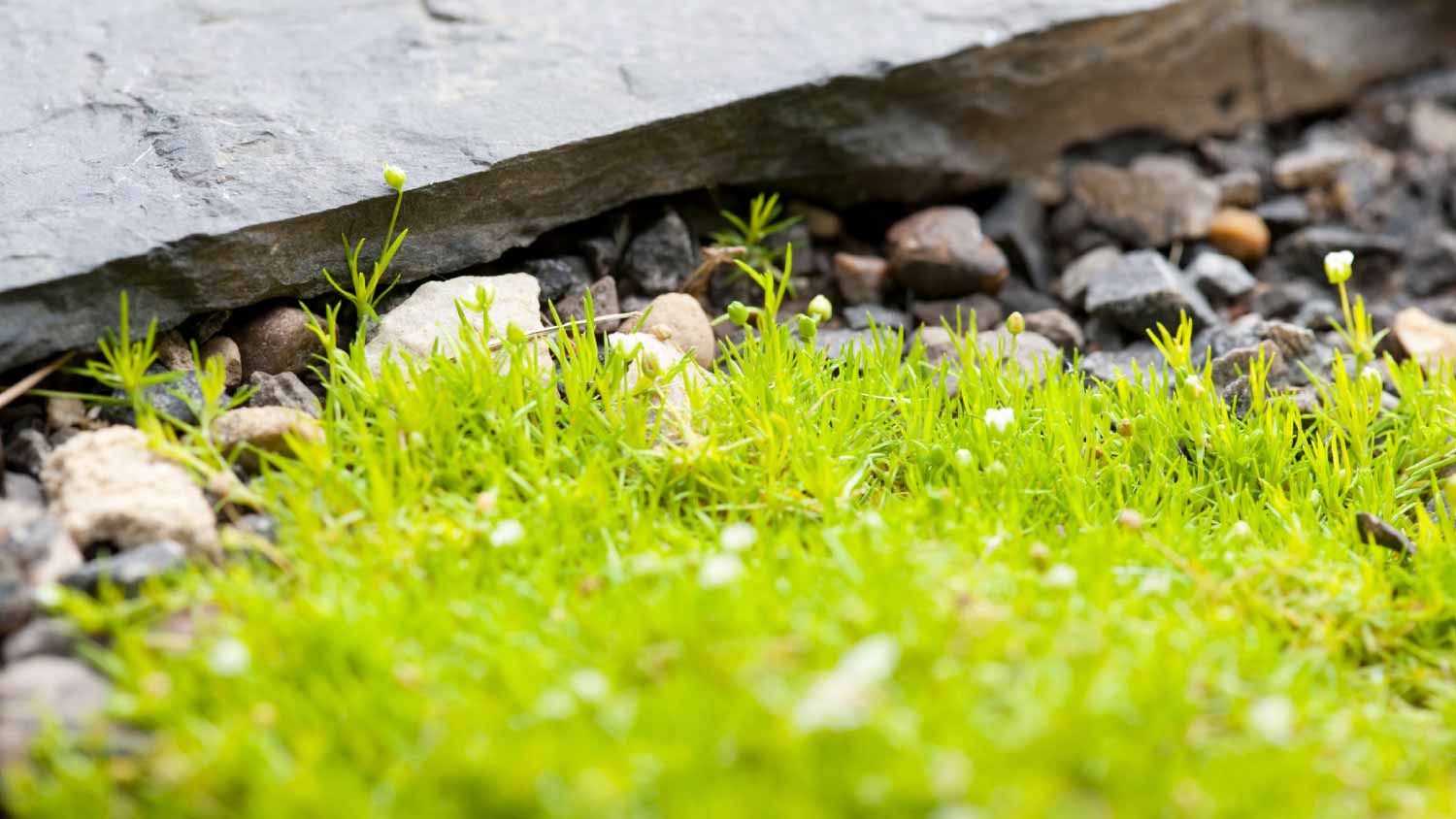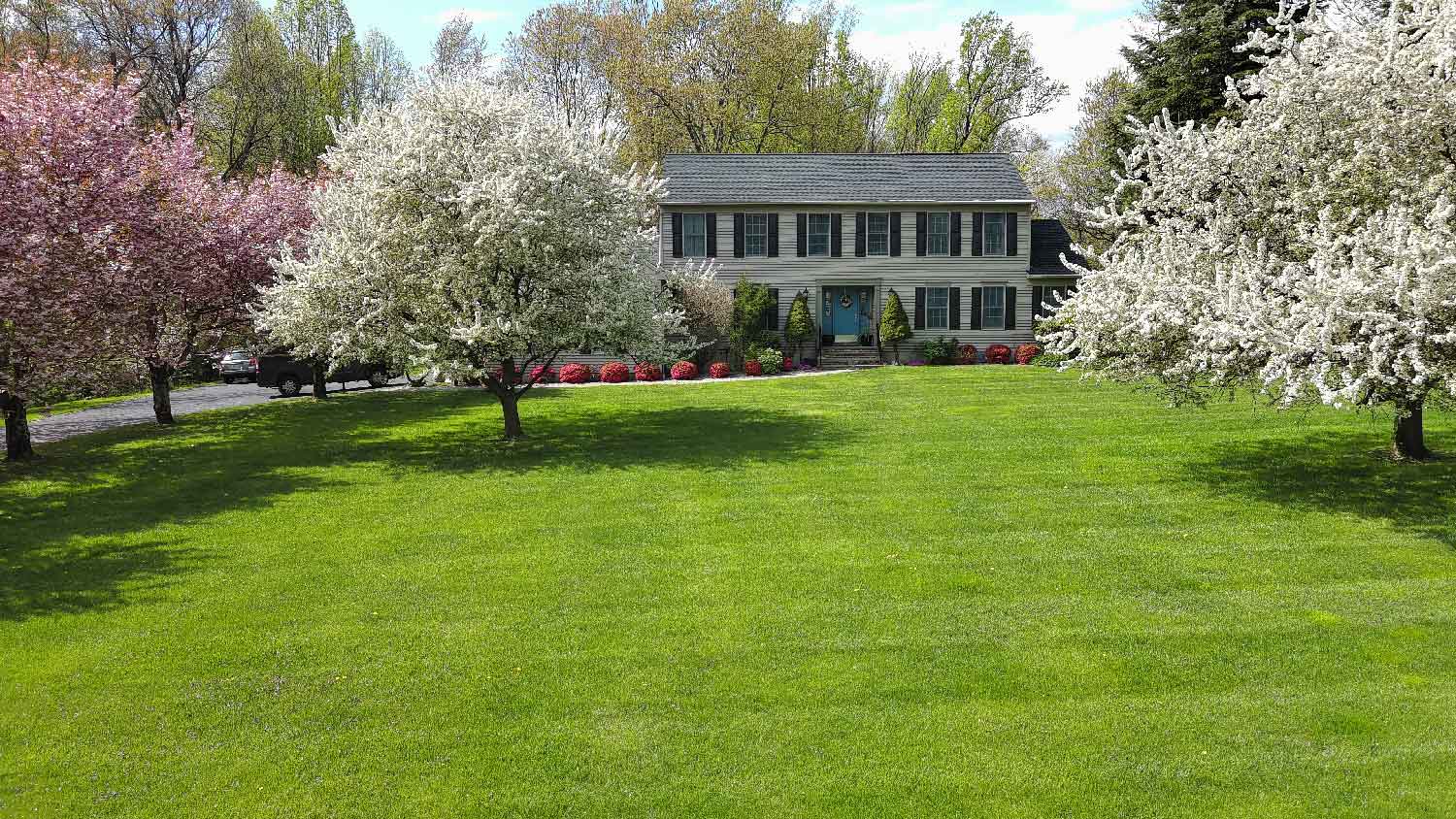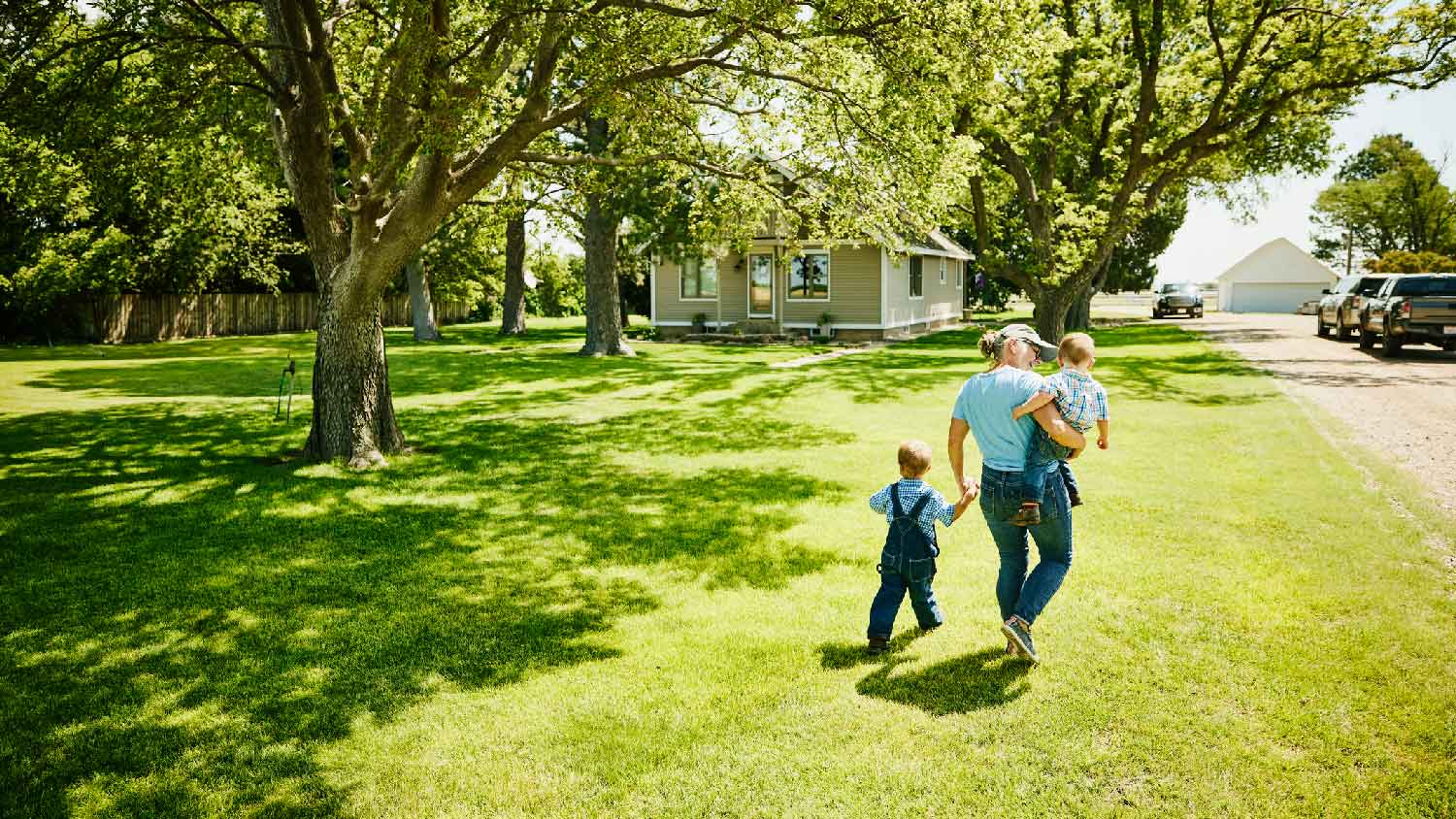How to Get Rid of Johnsongrass in Your Lawn or Garden
Weed out this invasive grass before it takes over your lawn


Every yard gets weeds at some point, so learning how to get rid of Johnsongrass is a necessary skill. But when that weed is an invasive plant that is tough to control, it’s another story altogether. Learn how to get rid of Johnsongrass, a noxious weed that grows fast, spreads even quicker, and can be hard to remove.
Why Do I Have Johnsongrass in My Lawn?
A grass native to the Mediterranean, Johnsongrass arrived in North America in 1830 when it was introduced as a forage crop for livestock, according to North Carolina State Extension. It has since become an “agricultural pest” throughout the United States.
One of the reasons Johnsongrass can be difficult to control is the plant’s aggressive rhizomes—thick, underground horizontal stems that send out fast-spreading shoots and roots.
And that’s not the only reason Johnsongrass is hard to contain. In addition to the invading rhizomes, each flower on the plant produces hundreds of seeds and they remain viable for more than 10 years in the ground. Many states, including Missouri, have classified it as a noxious weed, a harmful weed defined as one that causes damage to crops, natural habitats, ecosystems, humans, or animals.
While Johnsongrass control in pastures and near agricultural crops may be the biggest concern, it can also take over lawns and residential yards. It tends to sprout where the soil has been disturbed, such as freshly planted lawns or the edges of flower beds. It’s important to maintain the health of your lawn so Johnsongrass can’t take over.
How Much Does It Cost to Remove Johnsongrass?
The average cost of weed removal from a lawn can be anywhere from $35 to $120. Keep in mind that once Johnsongrass spreads, the cost may increase significantly due to the difficulty in removing it. In addition, to make sure Johnsongrass grass stays away, you’ll need to perform routine lawn maintenance, which can cost between $50 to $200 per month.
How to Identify Johnsongrass
Johnsongrass (Sorghum halepense) is a warm-season, perennial grass. When it first sprouts, it can look like a corn seedling, but Johnsongrass will have a football-shaped, dark brown or black seed, which usually remains attached as it sprouts.
It has wide leaves and grows in rough, dense clumps up to 8 feet tall. The extremely stout, whitish-colored rhizomes are covered in orange scales. The flowers grow in loose, branching pyramid shapes. They are green in spring and turn to deep red or purple in the fall, just before dispersing all of those seeds.
Is Johnsongrass Toxic?
Yes, it can be. Johnsongrass is dangerous to livestock and other animals (including humans), especially if it is wilted or regrowing after the grass is cut.
In other words, it’s most harmful when it’s under stress. Signs of Johnsongrass poisoning include anxiety, labored breathing, convulsions, and increased pulse rate. Death can occur if lethal levels of Johnsongrass are consumed. Consult your veterinarian immediately if you suspect an animal has eaten Johnsongrass.
How to Get Rid of Johnsongrass
Your best bet for controlling Johnsongrass in your lawn is to use multiple strategies when tackling this weed. The good news is that all of the methods are relatively inexpensive, though you may pay in sweat equity.
Here’s how to get rid of Johnson grass in your yard:
Pull Johnsongrass by Hand
When plants begin to sprout in the spring, you can pull the weed out by hand. Mature Johnsongrass plants have rhizomes that can run 5 to 6 feet (horizontally). The younger plants will likely have rhizomes that run a few inches in either direction. The roots will likewise be about 10 inches deep when the plant is young, but can grow as much as 5 feet in depth.
1. Use a hand trowel or sharp weeder to loosen the rhizomes and roots.
2. When pulling the Johnsongrass in your lawn, remove all of the roots and rhizomes, don’t just cut them off.
Use Herbicides
Using herbicides will not be enough to get rid of Johnsongrass completely. Look for post-emergent herbicides that list Johnsongrass as one of the weeds it will help control. Be mindful that some herbicides can kill off the grass and landscaping, so be careful when applying it.
Always keep pets and children out of harm’s way when applying herbicides for Johnsongrass and only apply according to the manufacturer’s instructions.
Wear proper PPE, including gloves, a mask, and protective eyewear.
Applying herbicide by backing away from the application area so you don’t walk through grass that may have chemicals on it.
Never spray so heavily that herbicide drips off the plant.
Make a Vinegar Solution
Using vinegar as an herbicide for Johnsongrass is an affordable way to get rid of this noxious weed. Household vinegar will work, but most household vinegar has a low acetic acid concentration (usually 5%). You can purchase horticultural vinegar at hardware stores or nurseries and it has a higher acetic acid concentration of 10% to 20%, making this option more effective.
Put the vinegar in a spray bottle and apply it straight to the weed. Keep in mind that vinegar will burn your turfgrass as well.
Target the plants as directly as possible with the spray bottle, and avoid applying on a windy day.
You may want to wear gloves to avoid having the vinegar smell on your hands the rest of the day.
Till the Soil
Use a method that farmers use to control Johnsongrass in the pasture: tilling deeply and frequently.
In the fall, when your lawn is ready to go dormant (usually late September or October), mow your lawn one last time.
Use a rototiller to till your garden or lawn at least 3 to 5 inches deep.
It's critical that the rototilling is deep enough. Shallow tilling will spread the rhizomes around your yard and won't penetrate deep enough to unearth the plants before winter.
Before the first frost, apply an herbicide to the area you've tilled. The tilling will bring rhizomes and seeds to the surface where the herbicide can take effect.
Repeat this tilling process weekly between fall and the first frost to bring all the rhizomes to the surface.
Remove Seed Heads
As soon as you see flowers, cut them before they go to seed.
Keep a paper bag nearby and place the flowers into the bag immediately after cutting to make sure you don’t leave any on the ground.
Removing the flowers will keep the plant from going to seed, thereby helping to prevent the plants from spreading more seeds.
Flood the Grass
This method for getting rid of Johnsongrass only works if it isn’t growing in the middle of other plants you want to keep and if you can keep the area flooded.
Flood the area where the Johnsongrass is growing with several inches of water and keep the water level high over several days to drown the plant.
If Johnsongrass is growing throughout your lawn, you can try flooding the lawn later in the season (late summer or early fall) when you aren't using your lawn as much and when the water is less likely to evaporate in hot temperatures.
Keep in mind that this kind of excessive watering isn't very good for your turfgrass, so you may need to reseed your lawn next spring.
Heat the Soil
According to the University of California Integrated Pest Management, soil solarization—heating the soil using the sun—can help control weeds and pests without chemicals. For getting rid of Johnsongrass, this method is most effective if the rhizomes of the Johnsongrass are visibly closer to the surface. Alternatively, you can use it after tilling. Be advised that this will likely kill your existing grass as well.
During the hottest part of the summer, spread clear plastic tarps across the area with Johnsongrass.
Secure the tarps and leave them in place for four to six weeks. The idea is to create a hot environment where the Johnsongrass can’t survive.
Cover Johnsongrass With Newspaper
Like any plant, Johnsongrass needs sunshine and water to grow. If you can cut off the source of both, you may be able to essentially smother the Johnsongrass in your lawn.
This method doesn't work well with mature Johnsongrass because it can grow up to 8 feet in maturity. It can also get messy if you live somewhere that gets a lot of rain, as the newspaper will become a soggy mess and start to break down. Keep the weather in mind should you choose this course of action to get rid of Johnsongrass.
Spread newspaper across the lawn and secure it so it won't blow away. You may want to double or triple layer the newspaper.
Leave it in place for two to four weeks.
Practices to Avoid
Some methods of weed removal or elimination may sound effective but are actually detrimental to the health of your grass. You should avoid the below practices when attempting to get rid of Johnsongrass.
Fire
Tillage
Grazing
Manipulation of water levels
Biological controls, such as livestock grazing
How to Prevent Johnsongrass
Now that you know how to get rid of Johnsongrass, you’ll want to focus on prevention. Follow a basic lawn maintenance schedule to keep your grass growing strong.
Test the Soil
Soil tests, which are widely available at lawn care businesses or home improvement stores, can tell you what nutrients your soil currently has or is missing. It will also show the ph level of your soil, which should be at 6.5. Once you know what your soil is lacking, you can treat it properly by laying down fertilizer, seeding it, or top-dressing it with nutrient-rich compost.
Reseed Your Lawn
Occasionally, your yard may need a facelift that requires reseeding. Whether you have several dry, brown patches or have seen the effects of insect activity, reseeding helps restore your yard by introducing new seed genetics that can withstand disease and improve the look and health of your grass.
This process is best done in early fall, and requires about 5 hours to complete. The cost to reseed a lawn is $500 to $1,000 if you tackle reseeding yourself, including supplies like grass seed, fertilizer, and soil conditioner.
Fertilize the Grass
Adding a layer of fertilizer to your lawn is another way to enrich the soil and ensure you won’t have to deal with the effects of pesky weeds like Johnsongrass. Fertilizer can be applied anywhere from two to five times a year, depending on the needs of your yard.
One of the first steps in figuring out how to fertilize your lawn is to determine whether you have cool-season or warm-season grass. Cool-season grass such as fescue grass or Kentucky bluegrass, should be fertilized in the spring or fall. Warm-season grass, such as Bermuda or Zoysia grass, will need fertilization later in the year.
Water Your Yard
Once you’ve seeded or fertilized your yard, you’ll want to lightly coat the grass with water about 1 to 2 hours after application. This step kicks off the decomposition process and helps encourage deep roots to grow in the soil. Make sure to also abstain from coming in direct contact with your lawn for at least 48 hours, since some compounds in fertilizer can be dangerous to small children and pets.
DIY vs. Hire a Pro
Whether or not to hire a lawn care professional to get rid of Johnsongrass depends on the severity of the weed infestation. If you are experiencing a few young plants that you can remove by hand, it makes sense to take a DIY approach with your weeder and a pair of garden gloves.
However, Johnsongrass can grow fast and spread quickly, so if you want to be sure it doesn’t spread, you may consider hiring a pro to handle weed control.
Amber Guetebier contributed to this piece.
Frequently Asked Questions
Johnsongrass and crabgrass are invasive weeds that can overtake your lawn. Crabgrass is a low-growing grass most often seen in lawns, flower beds, and vegetable gardens. While you may find Johnsongrass growing in your lawn, it will also grow in pastures, crop fields, and the edge of the road. Johnsongrass is much coarser than crabgrass. If left alone, Johnsongrass can grow up to 8 feet tall.
The safest method to avoid killing your turf grass is hand pulling Johnsongrass. You can also apply vinegar for a safer herbicide, but it will still burn your lawn if it gets on it.
Yes, Johnsongrass is a hard weed to kill. It has the ability to grow fast and spread even quicker, so it requires a detailed plan and thorough application to eliminate it. The best plan of action is to kill Johnsongrass while the weed is establishing itself by hiring a lawn care professional or following the steps above.
Mowing your grass regularly, especially if you’re mowing close to the ground, can help kill Johnsongrass. Frequent mowing helps limit the spread of Johnsongrass and can even deplete carbohydrate reserves in rhizomes over time. The more time you leave in between mowing, the more likely Johnsongrass is to regrow and take over your lawn.





- 12 Tips for Taking Care of Your Backyard, From Pruning to Weed Prevention
- How to Kill Grass in Flower Beds: 8 Easy Methods to Try
- How To Make Grass Green: Become the Envy of the Neighborhood
- 9 Fall Lawn Care Tips for a Healthy, Thriving Yard
- 7 Must-Know Tips for How to Keep Grass Green, Healthy, and Thriving
- Quick Curb Appeal: 10 Tips That’ll Turn Your Grass Green Fast
- Why Is My Grass Turning Yellow? 15 Solutions to Try
- The Beginner-Friendly Guide to Growing the Greenest Grass
- The Ultimate Lawn Treatment Analysis Checklist
- How to Remove Grass: 5 Methods to Try










